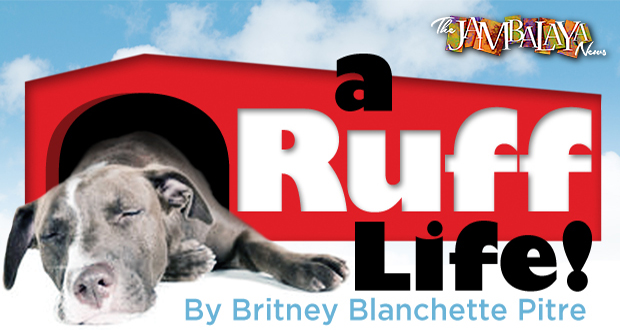Dogs are highly social animals (like us), thus they love attention (again, like us). However, the way they ask for attention can be quite painful, bratty, and just downright annoying. Jumping, pawing, barking, and nipping are all normal behaviors that dogs use to gain our attention, yet they can be quite dangerous. If a large dog jumps on a small child or an elderly person, the results can be harmful.
So, how do you “correct” these behaviors? The answer is really pretty simple: take your attention away when your dog exhibits an attention-seeking behavior. However, like anything else in dog training, it will take time and patience.
We will start with the most common attention-seeking behavior: jumping. Dogs jump to get our attention. When we pet them, talk to them, push them off us, strike them (which should NEVER be done at any point in time), or even look at them, then we have given them what they were seeking–attention! So, if and when your dog jumps up on you, you should immediately take all of your attention away from him. You literally ignore him. This makes you super boring.
Some trainers suggest turning your back to the dog. This can work, yet it can backfire, as well. If you turn too quickly, he may think you are playing, and that will only encourage more jumping. I suggest to just “be a tree”–a boring tree. As soon as your dog makes contact with you, immediately look straight up at the ceiling or sky and raise your arms above your head or across your chest (I recommend raising your arms so that the dog can’t nip or paw at them) and just be as dull as possible. It may take a few moments, but he will get bored with you and get off you. When he has all four paws on the floor/ground, ask him to sit, and THEN give him attention. If everyone is consistent with this, your dog will learn that jumping does not work, but sitting does.
Two other attention-seeking behaviors are barking and pawing. You should handle them the same way as jumping. If your dog places its paw on you for attention, look the other way until the paw is removed. Then, ask him for an alternate behavior (such as “sit”) and then reinstate your attention. If your dog barks at you for attention, look the other way until he is silent. Then, ask for an alternate behavior, and reinstate your attention.
Nipping needs to be handled the same way as jumping, pawing, and barking, but with a slight twist. Obviously just ignoring your dog while nipping is not the best idea. So, for example, if you are petting your dog and he or she nips you, say, “Eh eh,” and stop petting him. Wait a few moments, and then go back to petting him. The moment he nips or mouths you again, do the same thing. If he is on your lap, and nips you, say, “Eh eh,” and place him on the floor.
You can also administer a “time-out” if you are getting frustrated or if your dog keeps nipping/mouthing. A time-out should be away from the kennel/crate and should only last one to two minutes. If the time out is longer than that, the dog will forget why he was placed there in the first place. I recommend a small room, such as a utility room or bathroom. You may have to administer several time-outs in a day—that’s normal.
At the end of the day, remember to HAVE PATIENCE! Training takes time. There are no quick fixes. Never use any physical punishment. Kneeing your dog in the chest to get him or her to stop jumping may work, but it will also teach your dog to fear you. When animals are afraid, the fight-or-flight response is triggered, so they fight back, flee or freeze. None of those states of mind are healthy or fun. Training should always be healthy and fun.
So, until next time, Happy Training!
Britney Blanchette Pitre, CPDT-KA
Bons Chiens Dog Training, LLC.
a Ruff Life is a monthly column featured in the Jambalaya News and on LakeCharles.com, read more great articles from these great publications here.
